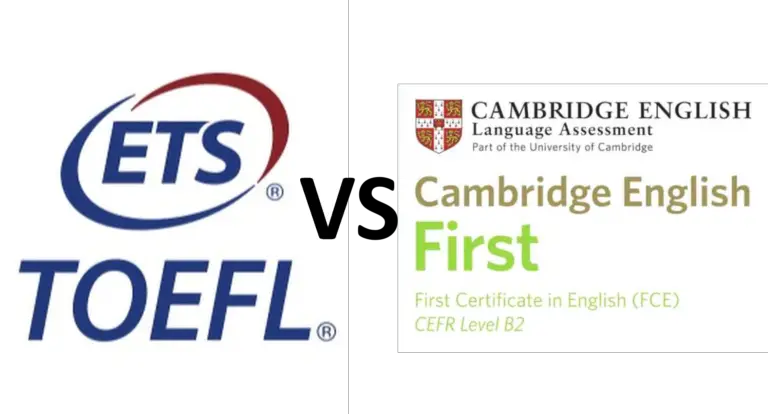When EFL/ESL students get to a certain level of English, their progress often halts. They’ve mastered the basics and are confident in all aspects of the language, yet they’re still a way off speaking like a native English speaker.
For these classes, a lot of methods which work for beginners and intermediates just don’t cut it. They need something else. To really push them to the next level of learning, you need to adapt.

To challenge EFL/ESL learners, immerse them in real English. This can be achieved through stimulating activities and projects, exposure to natural English in the media, or in extended conversations. Build upon their vocabulary with advanced synonyms, slang and phrasal verbs.
I teach several advanced EFL/ESL learners. Most of them are older teenagers or adults, since few children reach such a high level. What I like about these classes is both students and teachers can show a bit more personality and delve into topics on a deeper level.
Many advanced students want private conversation classes. For my guide on how to approach that kind of class, go to 7 Steps for Incredible Private EFL/ESL Conversation Classes.
How do you know if your EFL/ESL student is advanced?
According to the CEFR (Common European Framework of Reference) for Languages, non-native English speakers have one of six levels: A1, A2, B1, B2, C1 and C2. Those who have a C1 or C2 level (the highest) are considered “proficient users”.
The C1 level is usually required to study at English-speaking universities, or to get the best jobs in international companies.
According to the CEFR, speakers with a C1 level:
Can understand a wide range of demanding, longer texts, and recognise implicit meaning. Can express him/herself fluently and spontaneously without much obvious searching for expressions. Can use language flexibly and effectively for social, academic and professional purposes. Can produce clear, well-structured, detailed text on complex subjects, showing controlled use of organisational patterns, connectors and cohesive devices.
https://www.coe.int/en/web/common-european-framework-reference-languages/table-1-cefr-3.3-common-reference-levels-global-scale
C2 level is extremely hard to come by, and few English learners need to get such a strong qualification. It’s often required for translation work.
For me, an advanced learner is someone at, or working towards, a C1 level of English. They are able to do, or are at least close to doing, these five things:
- Follow a natural English conversation with relative ease.
- Speak without serious hesitation while using a variety of phrases and structures.
- Talk about any topic without significant lack of vocabulary.
- Read genuine news articles, novels and other texts in (not the kind of texts designed for English learning).
- Write confidently with a variety of structures on any topic they are familiar with.
If you’re not sure if your student is advanced or intermediate, you should perform a level test as part of a needs analysis.
To find out more about what a needs analysis is and learn my method, read my guide: Needs Analysis for Private EFL/ESL Lessons: 12 step guide.
Now we’ve figured out what an advanced learner is, let’s look at five ways of continuing their progress.
1. Develop fluency and range through extended conversation
A good proportion of advanced EFL/ESL learners go to class simply to talk.
When it comes to using English in practice, being able to communicate orally is a skill in high demand. Much more so than reading and writing. Business meetings, travelling abroad, and getting to know new friends are three of the top reasons people want to develop their speaking.
While you shouldn’t neglect the other aspects of the language, chances are your advanced students can already read and write to a sufficient level for their needs. As speaking is more of a performative skill, it requires regular practice.
This is where you can stretch your students. With quality questions and interesting topics, you can get your student to express themselves in new ways, incorporating challenging vocabulary and complex grammar structures.
Find out what they like and get them talking about it in depth. With almost all advanced students, you can have a full hour of conversation without needing any traditional lesson elements.
That’s not to say you’re just chatting. On the contrary, you’re listening, analysing and giving feedback at all times.

At points, you may want to pause the conversation to assist with a difficult phrase, or give them a more natural way of saying something.
If you think some of your students might be too shy for such a large amount of talking, you can change that. Creating an atmosphere and trust helps them open up.
While it may take a while to reach that point, in the vast majority of cases, if a student feels comfortable around you and is talking about something they like, they’ll talk for hours on end.
For more on how to give the best conversation classes, read my article 7 Steps for Incredible Private EFL/ESL Conversation Classes.
2. Let students hear your natural voice
When you teach beginner and intermediate students, you often have to modulate your language to ensure they understand. If you use slang or your local dialect, they’ll get confused quickly.
As a result, it’s easy for EFL/ESL teachers to slip into this modified way of speaking for all classes. But this limits advanced students.
I have a few students who work for international companies and speak English with people around the world – Germany, China, Brazil, etc. They always say it’s easier to communicate with non-native English speakers than it is natives.
This is because non-native speakers around the world learn the modulated, textbook English I mentioned above. They don’t learn “real” English. As a result, they struggle when meeting natives who use informal language.
For example, a non-native speaker would say, “You must remove the plastic cover and put it in the trash.“
Meanwhile, a native English speaker might say, “You gotta tear off the wrapper and throw it out.”
Here’s a great video from EnglishAnyone with some more differences.
To really take your students’ learning to the next level, you need to get them understanding some of this native speak. And, in time, get them using it as well.
The way to do this is simple. Try to speak like you would with your friends and family at home. Resist the temptation to modify your words to make sure they understand.
As they’re already advanced, they should be able to use context to decipher the meaning of any synonyms or expressions you use. They’ll start putting the pieces together.
And when they don’t understand, that’s a perfect opportunity to teach them new things, like throw out can mean the same as put in the trash.
3. Open students up to the English-speaking world
In most countries, British and American culture is already present. From the songs of the Beatles to Disney’s global empire, you can find English in the media everywhere you go.
It’s also present in tourist areas, travel hubs, restaurant chains, technology and business.
Chances are, your advanced English students spend some time absorbing English outside of your classroom.

But do they do it enough? And how do they engage with it? Do they actually watch TV in English, or do they have subtitles on? Do they really know the lyrics to their favourite Taylor Swift song, or do they just mumble along to most of it?
With such a wealth and variety of English sources at our disposal, we can give our students exposure to quality English outside the classroom as well as inside.
Here are some ways of achieving this:
- Encourage students to listen to English podcasts about something they love.
- Share your favourite bands and singers and try to figure out what the lyrics mean.
- Get them to watch English TV/films with no subtitles. If they struggle, they can put on English subtitles, but definitely avoid subtitles in their first language.
- Have them change the language of their video games to English.
- Share your favourite books.
- Get them to follow English YouTubers or social media influencers.
- Encourage them to read the news in English (BBC News is always a good option).
The idea is for them to start doing more of their normal activities in English, so they’re constantly taking in that natural, real language.
And lastly, the single best way of students getting access to real English is to go to an English-speaking country. And the longer they’re there, the better.
When I speak to people here in Spain, I can easily tell if they’ve spent a significant amount of time in an anglophone country. They stand out. Their fluency and confidence, for a start, is greater, but the way they speak and the expressions they use tell me they’ve actually been around native speakers.
Of course, this isn’t possible for everyone. But if the opportunity arises, definitely encourage your students to take advantage of it.
4. Provide demanding activities and projects
If you search for EFL/ESL activities online, you’ll get thousands upon thousands of ideas. Vocab games, arts and crafts activities, worksheets and speaking prompts. In fact, I’ve made lots of lists full of them!
Check out my 9 EFL/ESL Games and Activities for Advanced Learners.
But sometimes, you need more than this. Your students are past the stage of playing games and doing activities to focus on specific grammar structures.
Instead, you can use activities and projects which aren’t specific to English. Instead of having the language as the focus of the task, just do a project in which everything is done in English.
For example, making a film. This is one of my favourite projects, and while it’s not exclusive to advanced learners, with proficient students, you can really challenge them.
Planning, writing a script, preparing materials, figuring out how to get the best shot and editing it into a final product – it’s all required to make a film. By doing all these things in English, students develop vocabulary, communicate as a team, and present their language on camera.

What about starting a small business? I’ve done this with a few classes, buying materials online, making them into new products and selling them. All in English. Through teamwork, making a business plan, and handling money, they learned aspects of the lnguage they would otherwise never get in a textbook.
I’ve also had huge success with tabletop role-playing games. The most famous example of this type of game is Dungeons & Dragons, although there are many other alternatives.
Through these games, advanced students can get an English experience that is powerful, engaging and challenging.
They learn vocabulary about new places and objects, work as a team with their party members, and engage in a variety of social encounters with friends and enemies. Plus, the games are a lot of fun! Here’s a great video to give you general idea:
5. Build vocabulary
At all levels of English, vocabulary is a major factor in success. Without words, there is no language.
For many advanced students, vocabulary acquisition slows down. Even if they get exposed to new words, they can rarely use them as active vocabulary (words they can use confidently in their own speech and writing).
But vocab learning never stops. Native English speakers like myself are often learning new words and phrases. Just because a student knows enough to have a conversation about most topics, that doesn’t mean they should stop there.
To reach the highest level of English, the use of slang, phrasal verbs and idiomatic expressions is required.
But isn’t exposing students to these things like we did in steps 2 and 3 enough?
No.
They need more. They need an efficient memorisation strategy, or they’ll never internalise those words. Native speakers have had their whole lives to pick up new words. We can’t wait that long for our students to do the same.

Fortunately, I have the solution. Spaced repetition. It’s a system for effectively remembering vocabulary in both the short and long term. With Anki, my favourite language learning app, you can get amazing results.
I can’t explain everything about spaced repetition in this article, but I have a whole series of guides which walk you through my vocab system. There you can learn how to set up Anki, how to capture words for learning, and how to ensure students memorise them for years and years to come.
Check out the main article here: Best Method to Improve EFL/ESL Students’ Vocabulary: 9 Steps. And for getting started with Anki, follow this link: Supercharge EFL/ESL Vocab With Spaced Repetition (Anki).
Conclusion
Taking advanced EFL/ESL learners to the next level isn’t easy. It can seem like students plateau when they reach a certain point, and the methods you’ve been using in every other class don’t seem to work.
Be creative. For me, advanced lessons are great fun because you can explore in-depth topics of conversation and try out some long-term, complex projects. Each lesson brings something new and exciting.
For more tips on EFL/ESL teaching, check out these other articles of mine:
9 EFL/ESL Games and Activities for Advanced Learners
Why All EFL/ESL Teachers Should Use Role Play Activities
9 Items Every EFL/ESL Teacher Needs for Brilliant Classes
What Should You Teach EFL/ESL Students? New teacher guide
Gamification in EFL/ESL: Guide to motivating students
9 Best Free Apps for EFL/ESL Teachers and How to Use Them
How to Give Instructions in an EFL/ESL Lesson: 5 best tips
Best Method for Correcting EFL/ESL Writing: 9 Step Guide






